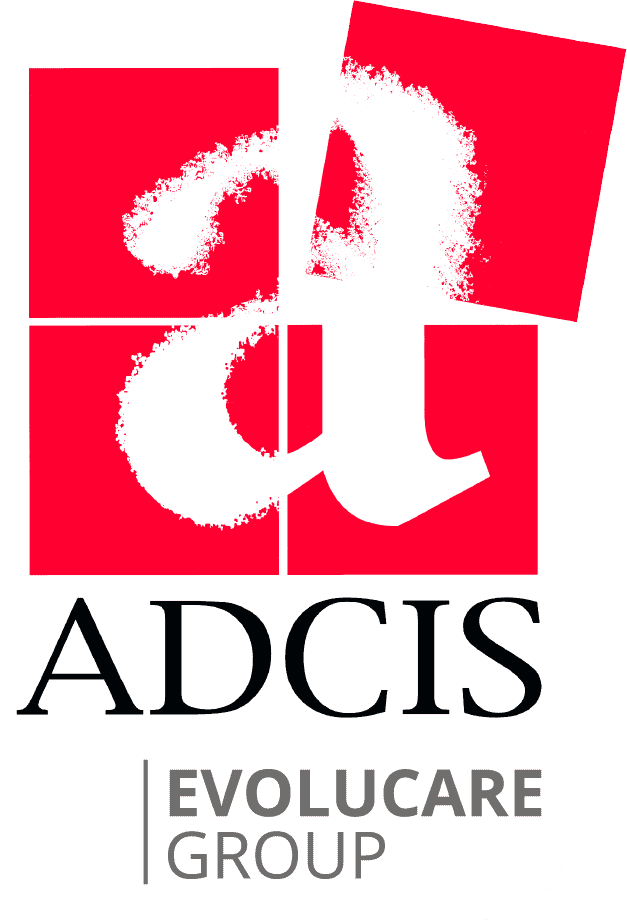Process, Analyze, and Display 3D Images
Aphelion™ users can now effectively process and display 3D images using virtually the same processing and analysis power provided for 2D images. The Aphelion Imaging Software Suite includes two optional extensions for these functions: the 3D Image Display Extension and the 3D Image Processing Extension. Using these powerful extensions, images acquired from sensor devices such as X-ray Micro-CT, 3D Atom Probe, confocal microscopes, medical scanners, and other 3D devices, can be easily processed, analyzed, and displayed using the Aphelion Dev Graphical User Interface.
The Aphelion 2D image processing operators have been enhanced to handle 3D data including, for example, convolution, addition, subtraction, maximum, erosion, dilation, distance function, labeling, watershed, and threshold. The 3D Image Processing Extension includes analysis on 3D images and true 3D Objectsets. A set of specific 3D measurements is available such as sphericity, surface area, and volume.
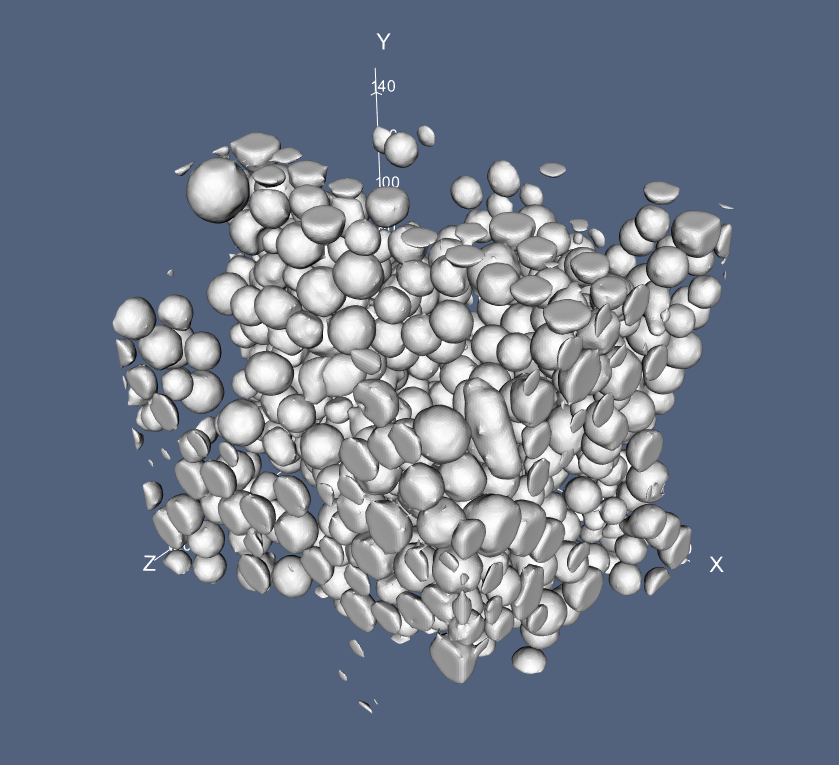
Extraction of Zirconia phasis and visualization using the isosurface rendering mode
3D Image Display
The 3D Image Display extension is now available in the Aphelion Imaging Software Suite environment. New features have been added to the previous version of the extension. Using new PC archi-tectures helped to dramatically improve the speed and the quality of the image rendering.
Both a 3D image and the associated Aphelion 3D ObjectSet can be simultaneously displayed in the same Aphelion Visualization window. Different visualization modes are available to let the user accurately analyze any 3D object.
The main features of the 3D Image Display ex-tension are:
- Visualization of both an image and an Aphelion ObjectSet in the same image window
- Zoom, pan, scroll, and rotation can be synchro-nized between multiple image windows
- Available rendering modes: Volume, isosurface, slice
- Available isosurface mode representations: Surface, Wire Frame, Points
- Full control of the transparency
- Color rendering through color LookUp Tables
- ObjectSet display with full control of each indi-vidual object display including color rendering
- Mouse control of the volume location and orien-tation
- Possibility to define the center of mass of one single object as the origin of the ObjectSet display
- Possibility to mouse click on individual objects
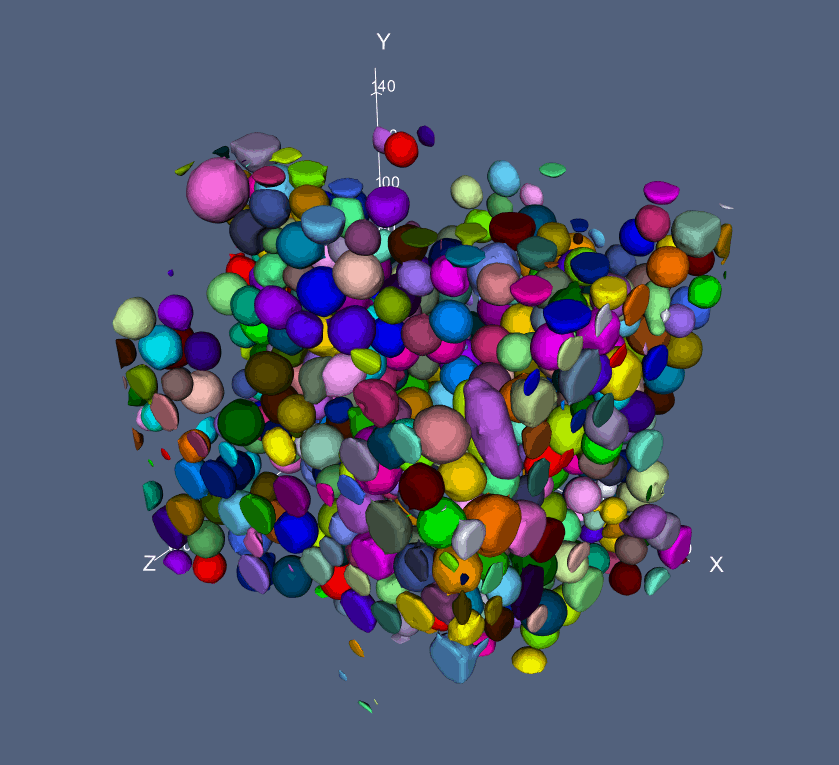
Extraction of Zirconia grains and visualization using the isosurface rendering mode with individual object coloring
3D Image Processing
The Aphelion 2D image processing operators have been enhanced to handle 3D data including, for example, convolution, addition, subtraction, maximum, erosion, dilation, distance function, labeling, watershed, and threshold. The 3D Image Processing extension includes analysis on 3D images and true 3D Objectsets. A set of specific 3D measurements is available such as sphericity, surface area, and volume.
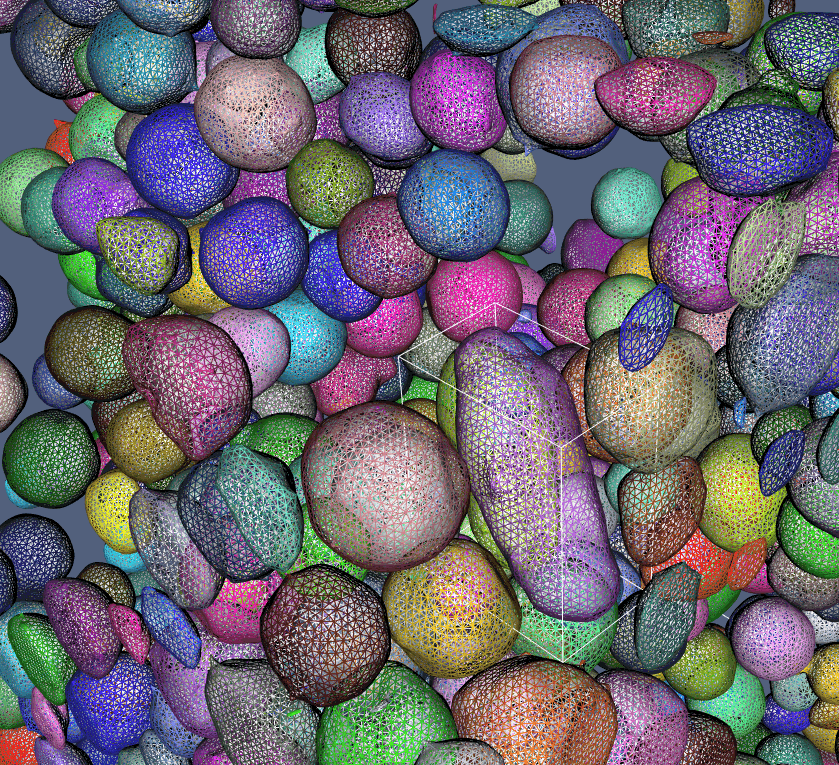
Zoom applied to the image displayed in isosurface rendering mode (Wire Frame representation) with individual object coloring
Main benefits of Aphelion 3D Extensions
- True 3-Dimension process and analysis
- 3 rendering modes to display 3D images and ObjectSets (Isosurface, volume, slice) in a single image view
- User-friendly control of the light, the field of view, and the 3D objects
- Support of 64-bit architectures to handle, process, and display very large 3D images
3D Skeletonization Extension
Quickly and accurately generate a 3D skeleton from a 3D tree-shape object
3D Skeletonization Extension is an Aphelion™ Dev extension1 that derives a skeletonized of a 3D binary image. The resulting skeleton is a 3D connected graph whose lines have the thickness of one voxel. This Skeletonization process is based on advanced work performed at the Ecole des Mines de Paris (France) and Monash University (Australia).
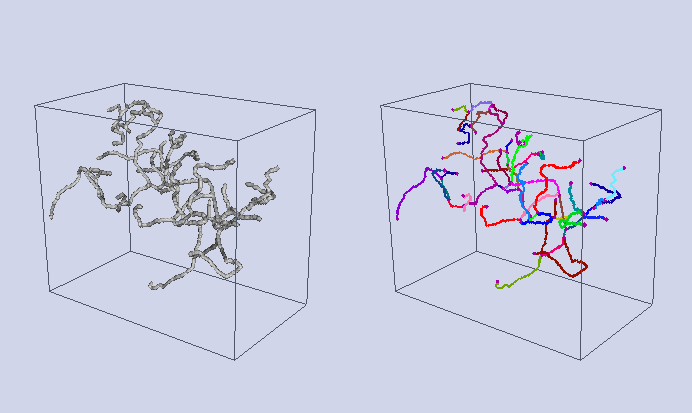
Branched structure example and skeletonization result
3D Skeletonization Extension employs a robust and highly accurate process that is especially well-suited to the analysis of intricate objects like branched structures (see the left figure above). The module’s output is a set of one-voxel thickness branches represented in a tree-like structure (see the right figure above). The resulting Skeletonization data is stored as an Aphelion ObjectSet that contains the attributes that define the skeleton. These include:
- Branch index;
- Level of branch in the hierarchy;
- Branch length (raw and calibrated);
- Length from each branch to the root;
- Associated skeleton label;
- Mother branch index;
- Number and index of each child branch; and
- Node coordinates in the 3D space.
While the 3D Skeletonization Extension process specifies the root of the skeleton (i.e., the last node of an extremity), the user can manually specify a different root node. When a new root node is chosen, the tree structure and associated attributes are then automatically recomputed. This method enables the user to exhaustively analyze each connected component of the skeleton.
Typical Skeletonization applications include analysis of blood vessels, neural systems, and any other tree-like structure in 3D space. 3D skeletons greatly enhance a user’s ability to quickly extract quantitative data from complex 3D structures.
Main benefits of the Aphelion 3D Skeletonization Extension
- Rapid generation and display of a one-voxel thickness skeleton
- Representation of the skeleton as a tree-like structure
- Computation of a comprehensive set of skeleton attributes
- User selection of a different root node causes recomputation of the skeleton
- Skeleton structure available in spreadsheet form for further statistical analysis
Note: 3D Skeletonization Extension is a plug-in for Aphelion Dev. It also requires the 3D Image Processing Extension to be installed and executable. The 3D Image Display Extension is highly recommended.
